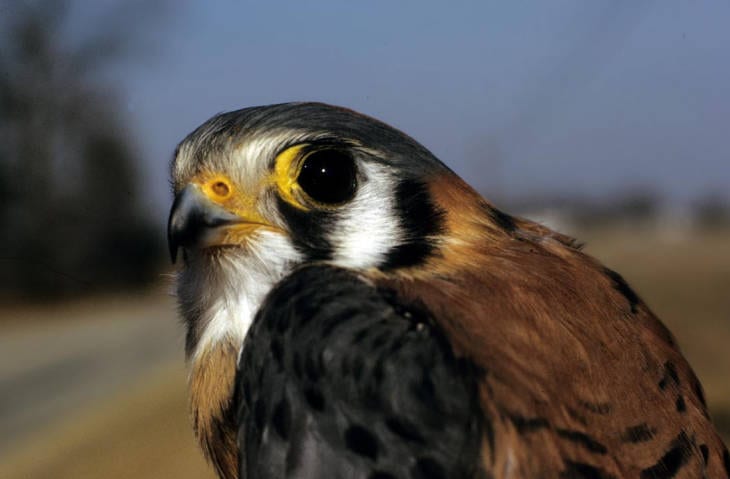The eyes of a kestrel remain fixed on an object due to the bird’s ability to use reflexes to rapidly reposition its eyes and head with respect to its body.
Introduction
Flying high above a grassland, an American kestrel (Falco sparverius) spies a tiny vole on the ground below. Even though it’s being buffeted by winds, this sharp-eyed member of the falcon family is able to keep its head virtually motionless and its eyes fixed on the creature. After hovering for a moment to collect itself, it plummets to the earth and snatches the meal in its sharp talons.
The Strategy
Kestrels are small birds of prey that are found throughout much of the Americas. They are among a few birds, including hummingbirds, that have a special talent: They are able to keep their eyes trained on objects even as their bodies move. This helps a kestrel to keep sight of prey it has already located, and also allows it to locate new targets, since it can see clearly whether an object it is observing is moving
A kestrel achieves this feat through a combination of four reflexes, movements that can happen extremely rapidly because they don’t require involvement of the brain. Two of these relate to the vestibular system, which controls balance, and two of which relate to the interaction between nerves and muscles that regulates eye movement.

The first of the four reflexes is called the vestibule-ocular reflex. This uses information from the eye and from the vestibular system to control eye movement relative to movement of the head and neck. The second, the vestibule-collic reflex, mobilizes neck muscles when it senses head movement. The third, the optolinetic nystagmus reflex, responds to the apparent movement of an image of an object on the retina by moving the eye in a way that keeps the image in the same spot on the retina. The fourth, the optocollic reflex, keeps the head motionless while the rest of the body moves. Together these reflexes help the kestrel to keep its eyes on the prize—and ultimately survive to pass the trait along to the next generation.
The Potential
The kestrel’s ability to have its body buffeted by wind or repositioned by other forces while its eyes stay fixed on an object could inform a diverse array of human activities. It could inspire efforts to design aerial structures such as wind turbines or TV towers in a way that allows them to maintain a fixed position regardless of wind or other forces acting on them. It might be useful in the development of augmented and virtual reality imagery, or for enhancing the quality of video or photographic data collected from drones. It might even contribute to developing better motion sickness therapies, since a common strategy for preventing this common ailment is to keep eyes fixed on a distant object.
The ability to maintain a stable visual image is of extreme importance while birds, such as raptors, are attempting to capture prey in flight.Jones et al. 2007









